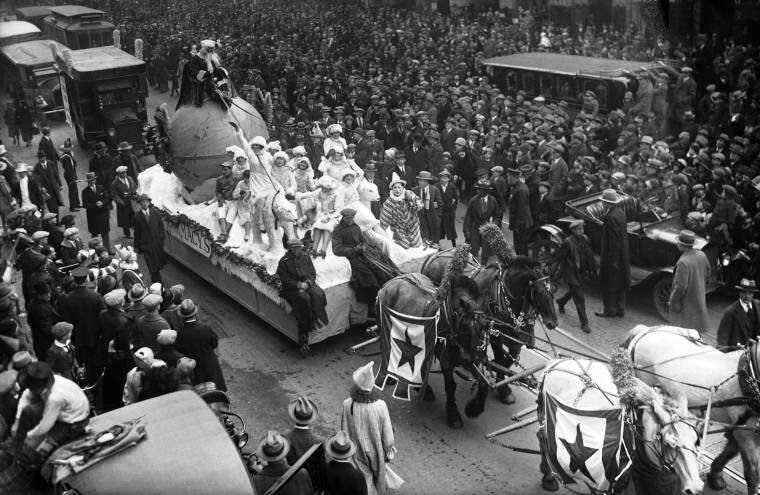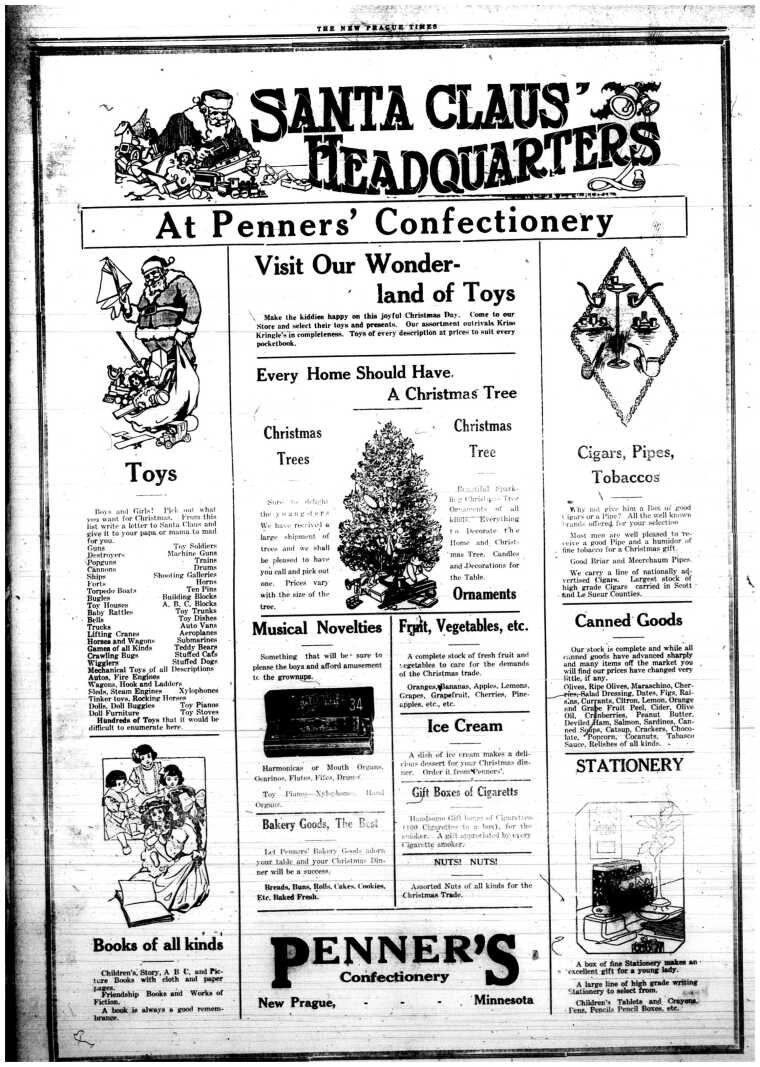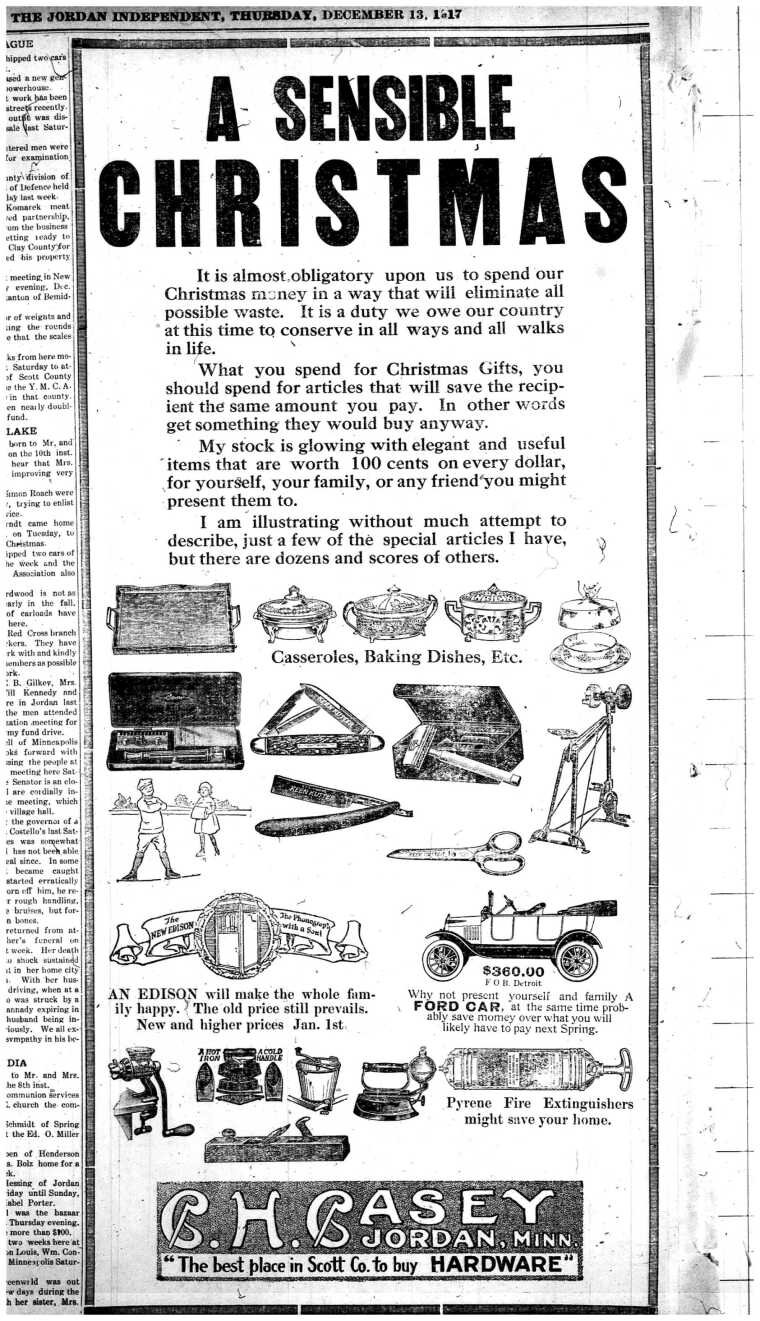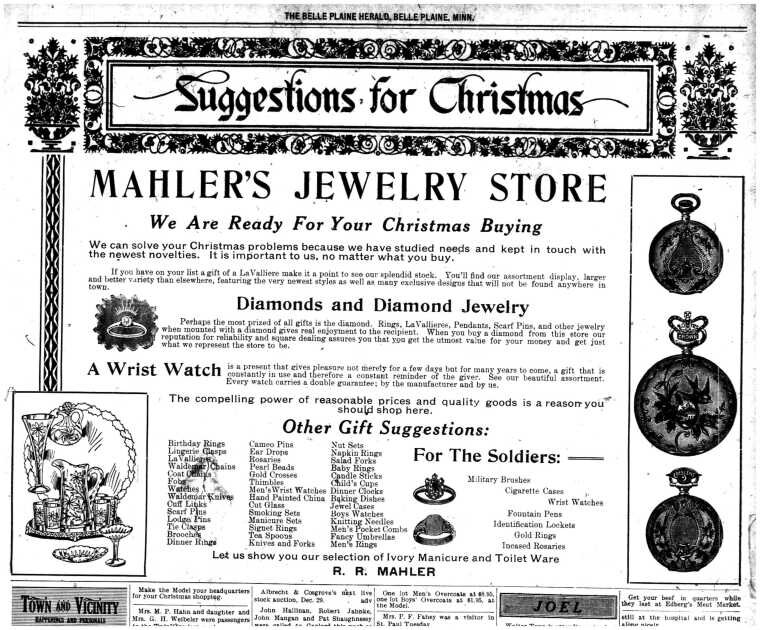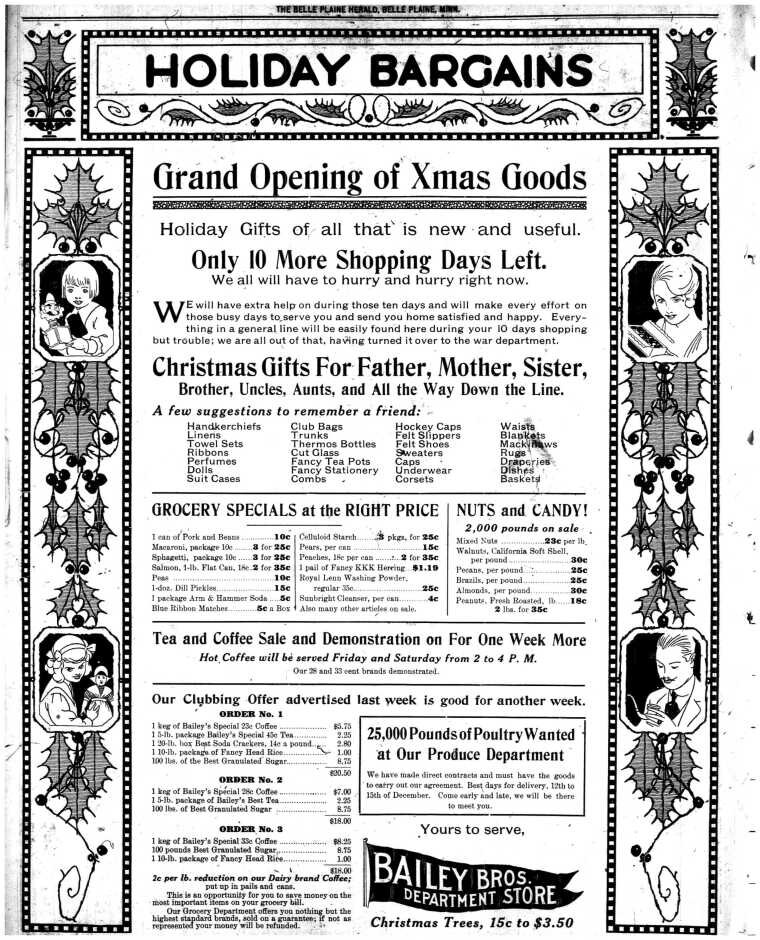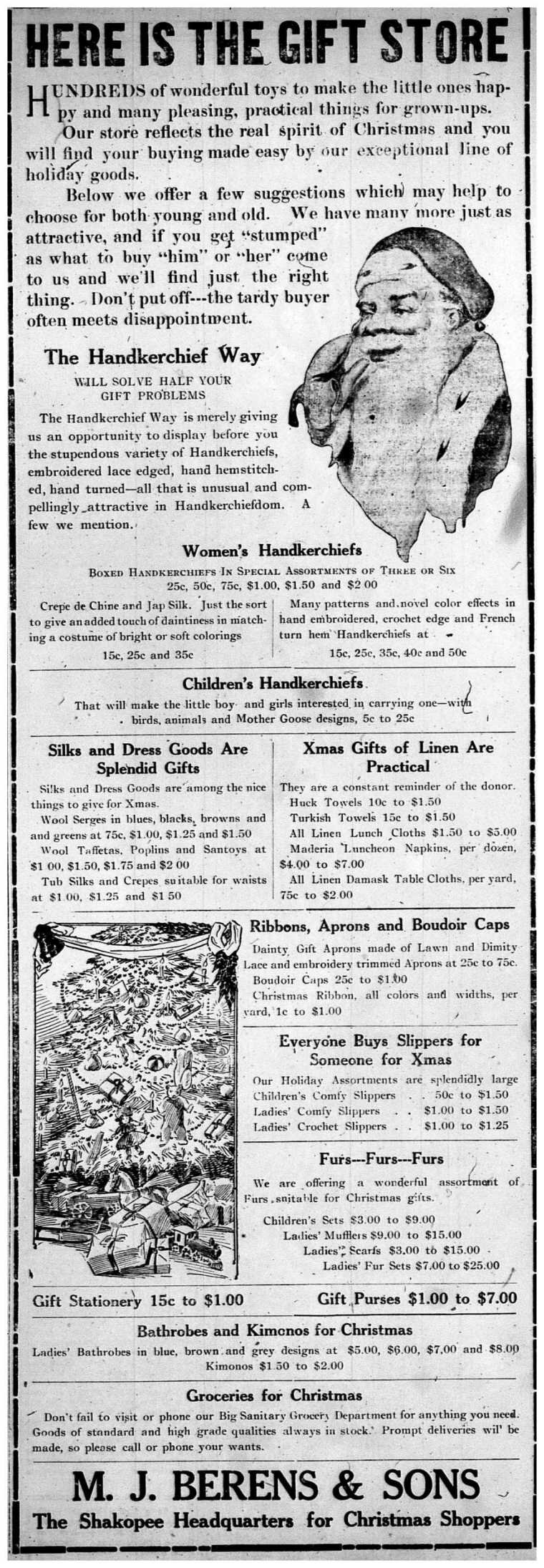Snow falls gently outside the frosted window. Candles and cookies fill the house with a comforting aroma, mixing with the sharp scent of the pine tree in the corner. Small lights twinkle in the darkness, lending their glow to the darkness. The music of Irving Berlin and Andy Williams croon from the radio. There is only one time of year where all of these things come together, and that is Christmas. Christmas has been celebrated in nearly every town in Scott County with special events for many years, and the Scott County Historical Society houses records of many of these events. Prior Lake, Jordan, and Shakopee perhaps have the most significant events, but the stories that come from the surrounding communities are equally, if not more so, interesting.
In Prior Lake, Christmas celebrations included a wide variety of activities, such as theatre parties, visits from Santa Claus himself, and a blood drive sponsored by the Red Cross. While these happenings seem fairly standard, in 1975, an unusual Christmas story appeared in the local newspaper. Lorraine Borka returned home one day to discover a package on her front doorstep. Curious, she ripped open the paper to reveal a child’s sled. Though it seemed strange, to Lorraine, the sled held a much deeper significance. 35 years earlier, she had received a sled for Christmas from Santa. She had gotten dressed to go outside to try the new toy, but at the end of her very first slide, a group of boys stole the sled and proceeded to ruin it beyond repair. The new sled was given, 35 years later, by the same group of boys who had spoiled the fun so long ago
In Jordan, festivities often involve the entire town. In the past, variety shows were put on by the area schools, as well as a Red Cross Christmas Seal Program. Christmas carolers were a common sight to see, and the all-around spirit was a happy one. Santa also visited Jordan on various occasions, and all the children were given the opportunity to see him and receive a small gift bag of Christmas goodies. The Jordan Theater also hosted two different movies for kids to enjoy during the holiday season. Agnes Morlock, a longtime Jordan resident, recalls in As I Remember Scott County, “Our Christmas tree was the most beautiful. It was usually a large tree with real white candles. These were only burned once, while we sang Christmas carols. The ornaments were animal cookies…cut out and frosted in white on both sides. These cookies and candles were intermingled with garlands of strung white popcorn. What a sight!”
Shakopee also hosts quite the number of holiday activities. The local historical park, The Landing (previously Murphy’s Landing), presents their award-winning “Folkways of the Holidays” demonstration every year. The official description describes the event as “a recreation of the ethnic holiday traditions of the Minnesota River Valley which focuses on frontier life from 1840-1890. Music, dance, food, and folk arts combine to illustrate the cultural diversity of the region. The festival showcases holiday traditions as celebrated by a variety of immigrant and religious groups.” The different cultures that are celebrated include French Canadian, American, Norwegian, Finnish, Czechoslovakian, Moravian, Swedish, and Victorian English. The Landing demonstrates the different specialty desserts, formal dinners, and other important traditions. In downtown Shakopee, there is a tree-lighting ceremony complete with photos with Santa, hot chocolate and apple cider, Christmas lights, decorated storefronts, ice sculpture, a petting zoo, and caroling.
Recollections from older residents of the community are featured in the anthology As I Remember Scott County, and many of them mention the Christmas season among their favorite memories. Edna Weckman, from New Market, describes, “The one thing I’ll never forget is going to midnight mass on Christmas Eve with the horses and the sleigh. We bundled up to keep warm. The stars shining brightly, the church lighted up and the Christmas songs made one feel happy and peaceful.” She is not the only one who fondly remembers mass. Patrick Devine of Belle Plaine mentions attending the 4:00 mass, and then returning home to open gifts. Stockings commonly held apples, oranges, and nuts, and occasionally a new shirt or handkerchief would be presented. After the gifts, the family would visit his grandmother’s house for dinner, and Patrick recalls that she “always made the best pies.”
Though the gifts and festivities are fun, the most important part of Christmas is not lost on the Scott County residents. To love and be loved in return, to spend time engaged with those around you, listening to stories of days past, is what Christmas is all about. It truly is the most wonderful time of the year.


















